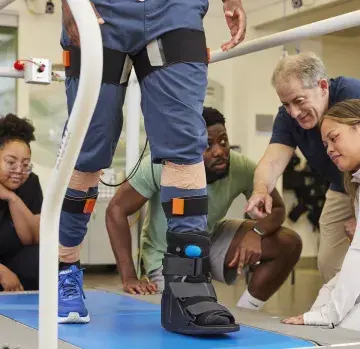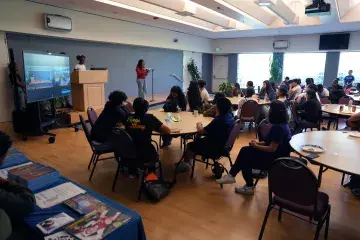San Quentin Inmates Deserve Better Healthcare
Student Voices is a blog series written by SMU students. If you have an idea for a story, reach out to ssolo@samuelmerritt.edu. This article is written by ELMSN-FNP student Esther Nickelson.
There are so many rules when trying to enter California’s oldest correctional institution, San Quentin State Prison. You can’t wear any blue (especially jeans), orange, white pants, or green pants with a tan shirt. You can only bring in a form of government identification and one car key. There is absolutely no running allowed. The only physical contact allowed is handshaking, unless performing a screening. Don’t ask the inmates what they are in for. Do not exit your building without an escort.
In October, faculty member Larry Vitale invited a group of SMU students from the Entry Level Master of Science in Nursing program to join Centerforce, the San Quentin TRUST fellows, the Alameda County Public Health Department, and other volunteers at the 13th annual San Quentin Health Fair. The goal of the fair is to improve the health and health education of incarcerated men. As volunteers, we provided basic screening tests, such as blood pressure readings, blood glucose and cholesterol tests, and vision and hearing exams.
Dozens of films, television shows, and video games have depicted San Quentin inmates as dangerous criminals. Indeed, San Quentin has the largest death row in the nation. Despite being in a place with a frightening reputation, I experienced much the opposite in my one-on-one interactions with inmates. I received overwhelming gratitude from the individuals who received care from me.
As I sat down with individual after individual, I learned that this health fair is one of their favorite times of the year because they feel cared for and “normal” for a brief moment. We talked about what their screening numbers were and what they meant, and I was met with curiosity and enthusiasm. In our conversations, I got the sense that many inmates feel forgotten by society and undeserving of care due to their past crimes. These inmates, regardless of why they were sent to San Quentin, are humans who deserve healthcare services too.
While reforms have been made since a federal judge ruled in 2001 that healthcare in California’s prison system violated the Constitution’s ban on cruel and unusual punishment, the U.S. Supreme Court ruled in 2011 that health outcomes in state prisons remained inadequate. The understaffed medical team at San Quentin, with limited resources, oversees thousands of individuals. In addition, social factors such as implicit bias and racism influence the care inmates receive. And, unlike other patients, inmates do not have the luxury to find care elsewhere.
What would it take to reshape the experience of care inmates receive? How can we as future healthcare professionals use our knowledge and training to help others live with dignity? These questions loomed large as we drove the mere 30 minutes from the prison back to Oakland.
However we get to those answers, we have to start by listening to inmates and learning about their experiences. This year, two San Quentin inmates and a volunteer started a podcast called “Ear Hustle.” I started listening to it earlier this summer, which made me even more excited to be a part of the health fair. They interview other inmates on life in prison, speak to mass incarceration, and cover general prison life. I highly recommend it!


